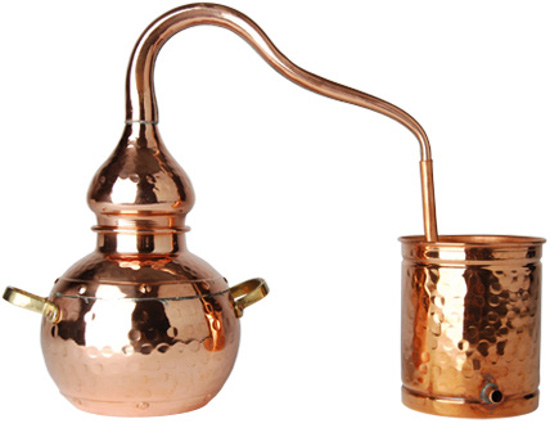It is said that both the shape and the size of a still has a strong influence on the final distillate. How and why are the two questions we are going to try to answer.
There are several reasons for choosing a still. Sometimes they are simply there, inherited from the past. Sometimes they have been purchased second-hand for economic reasons so they may differ from other stills in case they complete an installation. They will influence the final result without having been chosen for it. Sometimes the shapes are also the result of experiments in this field (a good example is the still created by Industry City Distillery in Redhook Brooklyn that I describe here).
Research on the influence of stills on spirits was rather empirical until the 1980s. For example Charles Doig is someone who has a lot of experience and is known for the pagoda roofs of his distilleries. You can find more information about him here for example.
In the 1980s, we began to better measure the respective influence of the various factors. For example, the base of the still containing the liquid to be distilled has no influence on the result. What has influence is the reflux zone and the swan neck.

Reflux is a phenomenon that helps to determine the proportion of aromatic components in the distillate. Slim stills with a wide swan neck promote significant reflux. There will therefore be more aromatic compounds in the final distillate. On the other hand, in the sturdy stills with a narrow swan neck, there will be less reflux, which will give a more rustic distillate.
Size and height also play a role. Indeed, the temperature drops as you get higher. It will therefore be necessary to ensure the heating temperature to avoid that the heaviest, but also sometimes aromatic components do not remain at the bottom of the tank because they have not had enough heating time to evaporate. Of course, it means using the height is also a way to avoid them eventually. It is also a toll at the disposal of the distiller.
WHAT ELSE INFLUENCES THE FINAL DISTILLATE?
The speed of distillation!Moderate heating results in slow distillation. The vapours rise slowly and do not heat the swan neck. The swan neck remains cold which produces reflux. There will therefore be more light aromatic components in the distillate. On the other hand, a rapid distillation will increase the number of congeners. There will be more rich components in the end.
Another point that plays a role is the length and angle of inclination of the lye pipe connecting the swan neck to the condenser.
It is also possible to increase the reflux of a still by equipping it with a boil ball. A spherical compartment is built in between the shoulder of the kettle and the gooseneck. The vapours that rise from the heating tank expand in this wider and slightly cooler area. The lower temperature causes the condensation of the richest aromatic compounds that fall back into the distillate. Another means of action: a lamp glass. It can also be embedded between the shoulder and the swan neck. It allows to gather more aromatic components.



